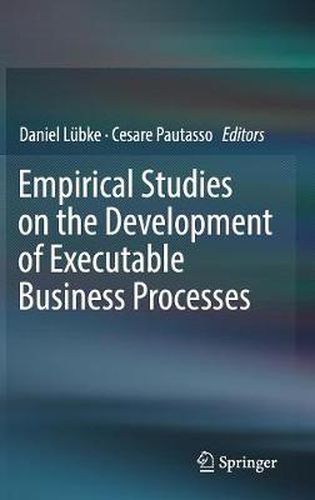Readings Newsletter
Become a Readings Member to make your shopping experience even easier.
Sign in or sign up for free!
You’re not far away from qualifying for FREE standard shipping within Australia
You’ve qualified for FREE standard shipping within Australia
The cart is loading…






This title is printed to order. This book may have been self-published. If so, we cannot guarantee the quality of the content. In the main most books will have gone through the editing process however some may not. We therefore suggest that you be aware of this before ordering this book. If in doubt check either the author or publisher’s details as we are unable to accept any returns unless they are faulty. Please contact us if you have any questions.
This book collects essential research on the practical application of executable business process modeling in real-world projects, i.e., model-driven solutions for the support and automation of digital business processes that are created using languages such as BPEL or BPMN. It mainly focuses on empirical research, but also includes an up-to-date cross-section of case studies in order to assess examples of BPM’s practical impact in the industry. On the one hand, executable models are formally and precisely defined so that computers can interpret and execute them; on the other, they are visualized so that humans can describe, document and optimize business processes at a higher level of abstraction than with traditional textual programming languages. While these important research areas have long been separated from one another, this book is an attempt at cross-fertilization, driven by the insight that business processes are the software behind today’s digital organizations, and that achieving a precise representation of such processes is key to their reliable execution. Consequently, the book presents various case studies and experiments that investigate questions of interest to both academia (e.g., identifying challenges for which no solution exists; sharing new insights into how existing approaches are actually used) and industry (e.g., guidelines on using certain technologies and on modeling comprehensible and executable processes). Both researchers and practitioners will benefit from the presentation of how concepts are transformed into working solutions. The studies are presented in a structured manner and with sufficient rigor to be considered empirical research, further enhancing the book’s value for the research community, while practitioners will find concrete guidance on making the right decisions for their projects.
$9.00 standard shipping within Australia
FREE standard shipping within Australia for orders over $100.00
Express & International shipping calculated at checkout
This title is printed to order. This book may have been self-published. If so, we cannot guarantee the quality of the content. In the main most books will have gone through the editing process however some may not. We therefore suggest that you be aware of this before ordering this book. If in doubt check either the author or publisher’s details as we are unable to accept any returns unless they are faulty. Please contact us if you have any questions.
This book collects essential research on the practical application of executable business process modeling in real-world projects, i.e., model-driven solutions for the support and automation of digital business processes that are created using languages such as BPEL or BPMN. It mainly focuses on empirical research, but also includes an up-to-date cross-section of case studies in order to assess examples of BPM’s practical impact in the industry. On the one hand, executable models are formally and precisely defined so that computers can interpret and execute them; on the other, they are visualized so that humans can describe, document and optimize business processes at a higher level of abstraction than with traditional textual programming languages. While these important research areas have long been separated from one another, this book is an attempt at cross-fertilization, driven by the insight that business processes are the software behind today’s digital organizations, and that achieving a precise representation of such processes is key to their reliable execution. Consequently, the book presents various case studies and experiments that investigate questions of interest to both academia (e.g., identifying challenges for which no solution exists; sharing new insights into how existing approaches are actually used) and industry (e.g., guidelines on using certain technologies and on modeling comprehensible and executable processes). Both researchers and practitioners will benefit from the presentation of how concepts are transformed into working solutions. The studies are presented in a structured manner and with sufficient rigor to be considered empirical research, further enhancing the book’s value for the research community, while practitioners will find concrete guidance on making the right decisions for their projects.